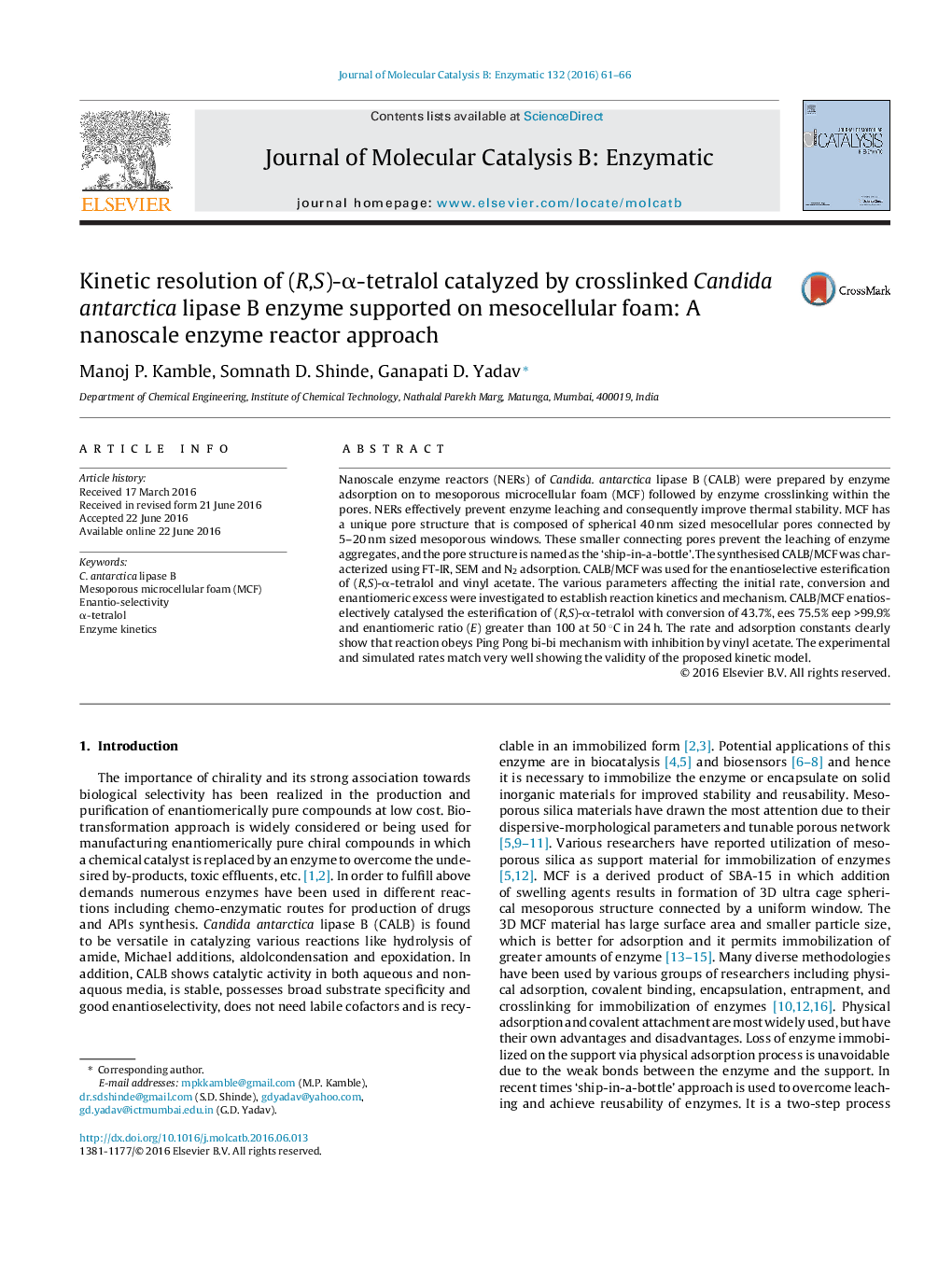| Article ID | Journal | Published Year | Pages | File Type |
|---|---|---|---|---|
| 69309 | Journal of Molecular Catalysis B: Enzymatic | 2016 | 6 Pages |
•Nanoscale enzyme reactors of C. antarctica lipase B were synthesized on mesoporous microcellular foam.•CALB/MCF catalyzed kinetic resolution of (R,S)-α-tetralol in organic media.•A conversion of 43.7% with 100% selectivity for (R)-α-tetralol (eep >99.9%) was obtained at 50 °C in 24 h, using CALB/MCF.•Developed biocatalyst can be readily recoverd and reused up to three cycles.
Nanoscale enzyme reactors (NERs) of Candida. antarctica lipase B (CALB) were prepared by enzyme adsorption on to mesoporous microcellular foam (MCF) followed by enzyme crosslinking within the pores. NERs effectively prevent enzyme leaching and consequently improve thermal stability. MCF has a unique pore structure that is composed of spherical 40 nm sized mesocellular pores connected by 5–20 nm sized mesoporous windows. These smaller connecting pores prevent the leaching of enzyme aggregates, and the pore structure is named as the ‘ship-in-a-bottle’. The synthesised CALB/MCF was characterized using FT-IR, SEM and N2 adsorption. CALB/MCF was used for the enantioselective esterification of (R,S)-α-tetralol and vinyl acetate. The various parameters affecting the initial rate, conversion and enantiomeric excess were investigated to establish reaction kinetics and mechanism. CALB/MCF enatioselectively catalysed the esterification of (R,S)-α-tetralol with conversion of 43.7%, ees 75.5% eep >99.9% and enantiomeric ratio (E) greater than 100 at 50 °C in 24 h. The rate and adsorption constants clearly show that reaction obeys Ping Pong bi-bi mechanism with inhibition by vinyl acetate. The experimental and simulated rates match very well showing the validity of the proposed kinetic model.
Graphical abstractFigure optionsDownload full-size imageDownload as PowerPoint slide
